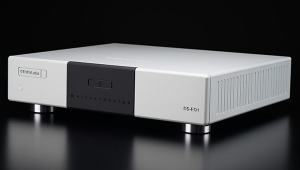| Columns Retired Columns & Blogs |
Seta Model L phono preamplifier
The minuscule electrical output of an analog signal from a moving-coil cartridge needs to be boosted before it can be converted to digital and equalized in the digital domain. Of course, you could use your current phono preamplifier and record an equalized signal to hard disk, but then you wouldn't get to experience Pure Vinyl's digital RIAA correction—nor would you be able to avail yourself of all the equalization curves provide by Pure Vinyl, of which there are almost too many to count.
Footnote 1: Channel D's Rob Robinson has that annoying engineer's habit of telling you to do something without telling you how to do it. For instance, from the Seta Model L's instructions: "The first time using your Seta, the internal battery should be fully refreshed at least once before operating (playing music)." How one "refreshes" the battery, or what constitutes a complete "refreshment," or how you'd actually know the battery has been "refreshed," he doesn't say. Get used to that as you familiarize yourself with and configure the software. (I later learned that refresh is batteryese for charge.)
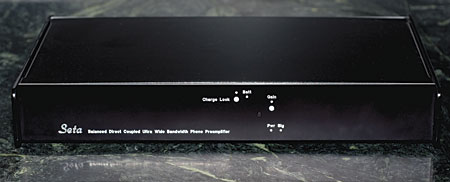
When I first wrote about Pure Vinyl in the March 2009 "Analog Corner," Robinson recommended using a good microphone preamplifier to provide the appropriate amount of flat amplification. But even without RIAA compensation, the cartridge still requires the optimal resistive loading, so he supplied his customers with pre-loaded RCA-to-XLR adapters. While that's still a viable if limited option, Robinson has now designed and manufactured, in America, four standalone Channel D phono preamplifiers, two of which I auditioned for this review: the AC-powered Seta Nano ($1599) and the battery-powered Seta Model L ($3799, or $4798 with internal RIAA compensation module).
The significantly more expensive, beautifully built Seta Model L includes balanced and single-ended inputs, balanced unequalized outputs, variable gain, and a built-in rechargeable battery power supply (footnote 1). A $999 option adds RIAA correction for both balanced and single-ended outputs (a high-output moving-magnet version is also available for the same price).
Sound Quality
If you're going to archive your LPs on your computer's hard drive, I suggest aiming higher than the Seta Nano. Switching to Channel D's battery-powered Seta Model L ($4798 with RIAA module) produced far superior results. The Model L is a quiet, remarkably neutral-sounding, extremely well-built phono preamplifier capable of excellent low-level resolution—not surprising, given that, in his previous life of designing scanning tunneling microscopes, Robinson had to deal with pico-amperes!
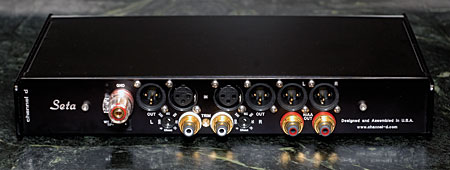
Recordings made using the Seta Model L's RIAA-equalized outputs were models of clarity, definition, tonal accuracy, detail resolution, and spatial coherence. Again, though, the digitally corrected version produced better attack, decay, and overall linearity than the direct analog playback, which was plenty good to begin with.
I recorded a test pressing of Nat King Cole's Love Is the Thing (45rpm LPs, Capitol/Analogue Productions SW-824); using the Seta Model L and playing it back using the digital RIAA, the sound wasn't exactly soft, warm, and romantic, but it was fundamentally accurate in terms of tonality and space, and its low-level resolution was remarkable. Did it sound "digital"? No, not as analog fanatics normally pejoratively use the word.
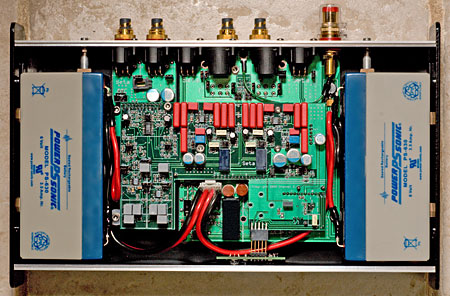
I then played the record "live," using the $60,000 Vitus Audio MP-P201 phono preamp. While the sound of the Vitus swamped that of the digital recording made via the Model L's flat outputs and the Lynx soundcard, it wasn't $55,000 better, and the differences weren't in the usual digital-vs-analog sense. The "live" presentation had greater transparency, immediacy, three-dimensionality, top-end air, and musical flow.
Summing Up
Though you'd lose the direct analog feed, if you like your regular phono preamp I'd recommend getting the Seta Model L minus the RIAA section and saving $999, especially if you have a substantial collection of pre-RIAA recordings. You could try recording both ways, and chuck your current phono preamp if you prefer the Seta Model L. And don't be surprised if that's what happens, particularly if you pay attention to the digital RIAA's finesse and robust attacks—particularly in the bottom octaves—and its unerring tonal neutrality.
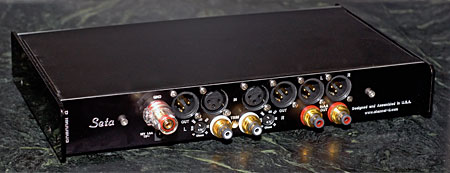
You know the old audiophile chestnut of the lifting of veils from the music? Listen and that's what you're sure to hear, without an additive penalty in terms of the usual digital edge and etch.
Footnote 1: Channel D's Rob Robinson has that annoying engineer's habit of telling you to do something without telling you how to do it. For instance, from the Seta Model L's instructions: "The first time using your Seta, the internal battery should be fully refreshed at least once before operating (playing music)." How one "refreshes" the battery, or what constitutes a complete "refreshment," or how you'd actually know the battery has been "refreshed," he doesn't say. Get used to that as you familiarize yourself with and configure the software. (I later learned that refresh is batteryese for charge.)
- Log in or register to post comments
